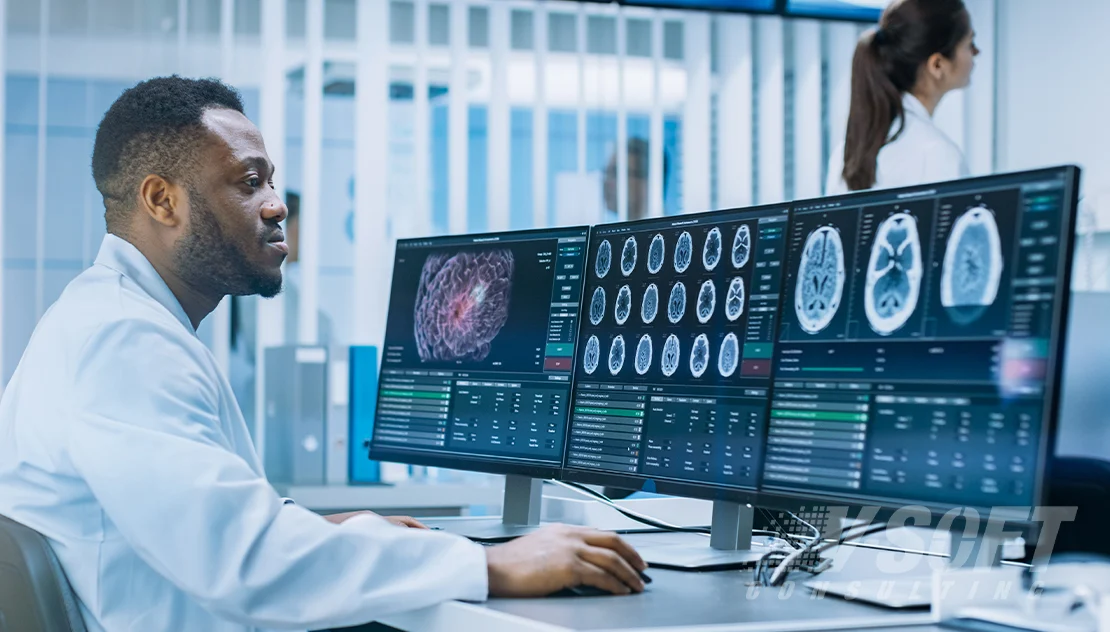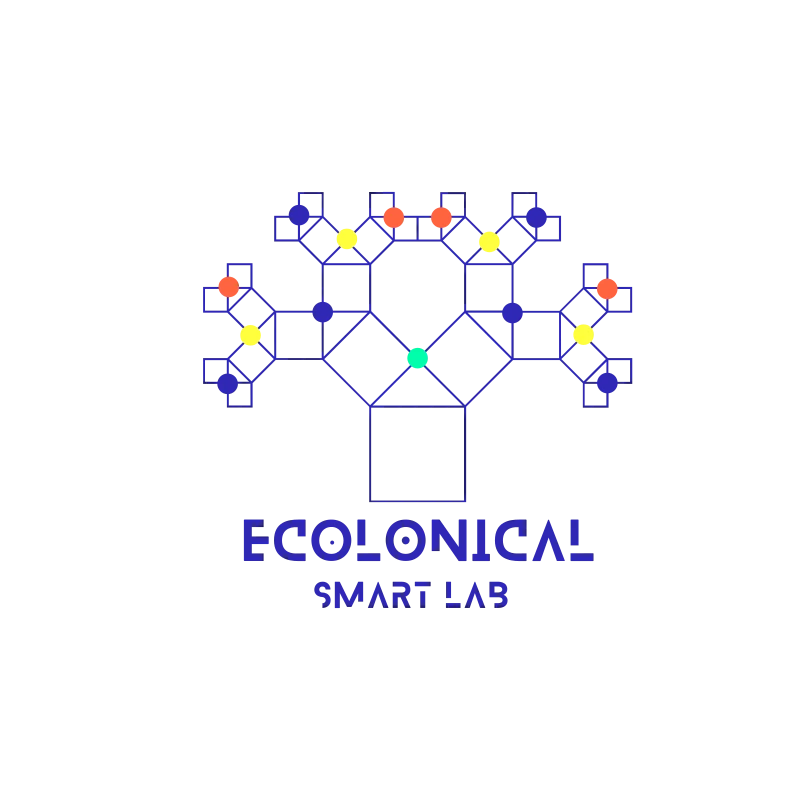
AI in Healthcare: A Review (2014-2023)
Contents
- I. Abstract
- II. INTRODUCTION
- III. LITTERATURE REVIEW
- IV. METHODOLOGY
- V. RESULTS
- VI. FUTURE DIRECTIONS
- Integration of multimodal data
- Transfer learning and domain adaptation
- Real-time and point-of-care applications
- Longitudinal and dynamic modeling
- Integration of multi-omics data
- Real-world evidence and outcome evaluation
- Clinical decision support systems
- Clinical language understanding
- Clinical phenotyping and cohort identification
- Clinical documentation improvement
- DL architectures
- Explainability and interpretability
- Multi-modal image fusion and analysis
- Privacy-preserving machine learning
- Adversarial attacks and defenses
- Explainable AI for privacy
- Ethical frameworks and governance
- VII. CONCLUSIONS
- VIII. REFERENCES
I. Abstract
“The article aims to serve as a valuable resource for individuals seeking to understand the use of AI in healthcare and its implications.”
II. INTRODUCTION
III. LITTERATURE REVIEW
IV. METHODOLOGY
V. RESULTS
VI. FUTURE DIRECTIONS
Integration of multimodal data
To improve diagnostic accuracy and prognostic capabilities, future research should explore the integration of multimodal patient data, including medical images, genetic information, clinical measurements, and patient-reported outcomes. Developing algorithms that can effectively leverage and integrate diverse data sources will provide a comprehensive view of the patient’s health and enable more accurate predictions.
Transfer learning and domain adaptation
As healthcare systems and datasets differ across institutions and populations, developing machine learning models that can adapt and generalize to different domains is crucial. Future research should investigate transfer learning techniques that allow models trained on one dataset to be applied to another with limited labeled data. This will facilitate the broader adoption and deployment of machine learning algorithms across healthcare settings.
Real-time and point-of-care applications
To support real-time decision-making and enable point-of-care applications, future research should explore the development of machine learning algorithms that can process and analyze data in real-time. This includes optimizing algorithms for efficiency, designing scalable architectures, and leveraging edge computing to enable the deployment of models on portable devices and healthcare systems.
Longitudinal and dynamic modeling
To capture the dynamic nature of diseases and treatment responses, future research should explore longitudinal modeling techniques that can analyze and predict disease progression over time. Incorporating temporal information, such as time-series data from electronic health records, wearable devices, and continuous monitoring, will enable more accurate predictions and personalized treatment plans.
Integration of multi-omics data
With the advancements in genomic technologies, future research should focus on integrating multi-omics data, including genomics, transcriptomics, proteomics, and metabolomics, into predictive analytics models. This integration will provide a comprehensive understanding of the molecular mechanisms underlying diseases and enable tailored treatment strategies based on individual molecular profiles.
Real-world evidence and outcome evaluation
To validate the effectiveness of predictive analytics in personalized medicine, future research should emphasize the collection and analysis of real-world evidence. Conducting large-scale observational studies and randomized controlled trials that evaluate the impact of predictive analytics on patient outcomes, treatment response, and healthcare costs will provide robust evidence for its implementation in clinical practice.
Clinical decision support systems
Integrating predictive analytics into clinical decision support systems will facilitate the seamless integration of personalized predictions into routine clinical workflows. Future research should focus on developing user-friendly interfaces, decision support tools, and visualization techniques that effectively communicate predictions and recommendations to healthcare providers. This will enable informed clinical decision-making and enhance the adoption of predictive analytics in healthcare settings.
Clinical language understanding
Developing advanced NLP models that can understand and interpret clinical language with a high level of accuracy and specificity is crucial. Future research should focus on training models to comprehend complex medical terminology, context, and nuances present in clinical text data. This includes the development of domain-specific language models, ontologies, and semantic understanding techniques to improve the accuracy and precision of clinical text mining.
Clinical phenotyping and cohort identification
NLP techniques have shown promise in automating the identification and characterization of patient cohorts based on specific clinical phenotypes. Future research should focus on refining and expanding the capabilities of NLP algorithms to accurately identify and classify patients based on their clinical characteristics, comorbidities, and treatment history. This will aid in clinical research, epidemiological studies, and precision medicine initiatives by enabling efficient cohort identification and stratification.
Clinical documentation improvement
NLP can assist in improving the quality and efficiency of clinical documentation by automating tasks such as coding, summarization, and de-identification. Future research should explore methods for automating and enhancing the accuracy of clinical coding, enabling more efficient billing and reimbursement processes. Additionally, NLP can help in generating concise and standardized clinical summaries, reducing documentation burden, and facilitating comprehensive patient understanding.
DL architectures
DL models have shown remarkable success in various computer vision tasks. Future research should investigate the development of novel DL architectures specifically tailored for medical image analysis. This includes exploring architectures that can handle multi-modal imaging data, handle limited data availability, and incorporate domain knowledge to enhance interpretability and performance.
Explainability and interpretability
DL models often suffer from a lack of interpretability, hindering their acceptance in clinical settings. Future research should prioritize the development of explainable and interpretable computer vision models that can provide insights into their decision-making processes. This involves the integration of attention mechanisms, saliency mapping, and uncertainty quantification techniques to enhance model interpretability and build trust among healthcare professionals.
Multi-modal image fusion and analysis
Medical imaging often involves the integration of multiple imaging modalities, such as MRI, CT, and PET scans. Future research should investigate methods for effectively fusing and analyzing multi-modal medical images to extract comprehensive diagnostic information. This includes the development of fusion algorithms, multi-modal feature extraction techniques, and DL architectures that can effectively leverage the complementary information from different imaging modalities.
Privacy-preserving machine learning
Future research should focus on developing privacy-preserving machine learning techniques that allow analysis and model training without compromising individual patient data privacy. This includes exploring federated learning, secure multi-party computation, and differential privacy methods to enable collaborative analysis while protecting sensitive patient information.
Adversarial attacks and defenses
As AI systems become more prevalent, the vulnerability of these systems to adversarial attacks poses a significant concern. Future research should investigate potential vulnerabilities and develop robust defenses against adversarial attacks in healthcare AI applications. This involves exploring techniques such as adversarial training, input perturbation, and model robustness enhancements to ensure the security and integrity of AI systems.
Explainable AI for privacy
The interpretability and transparency of AI models play a crucial role in addressing privacy concerns. Future research should focus on developing explainable AI methods that not only provide accurate predictions but also enable patients and healthcare professionals to understand how decisions are made. This transparency can help build trust, facilitate informed consent, and ensure privacy-aware AI systems.
Ethical frameworks and governance
Future research should explore the development of ethical frameworks and governance models that guide the responsible and ethical use of AI technologies in healthcare. This includes addressing issues related to consent, data ownership, algorithmic bias, and the equitable distribution of healthcare resources. Developing guidelines and policies that promote patient-centered care, fairness, and transparency will ensure that AI applications in healthcare adhere to ethical principles and societal norms.
VII. CONCLUSIONS
VIII. REFERENCES
- Beam, A. L., & Kohane, I. S. (2018). Big data and machine learning in health care. JAMA, 319(13), 1317-1318.
- Chen, J. H., Asch, S. M., & Mathur, M. (2017). Machine learning and prediction in medicine—beyond the peak of inflated expectations. New England Journal of Medicine, 376(26), 2507-2509.
- Cho, D. Y., Wang, S., & Wu, Y. (2018). Big data and AI in critical care. Journal of Intensive Care Medicine, 33(1), 2-7.
- Esteva, A., Kuprel, B., Novoa, R. A., Ko, J., Swetter, S. M., Blau, H. M., & Thrun, S. (2017). Dermatologist-level classification of skin cancer with deep neural networks. Nature, 542(7639), 115-118.
- Gulshan, V., Peng, L., Coram, M., Stumpe, M. C., Wu, D., Narayanaswamy, A., … & Daly, E. J. (2016). Development and validation of a DL algorithm for detection of diabetic retinopathy in retinal fundus photographs. JAMA, 316(22), 2402-2410. doi: 10.1001/jama.2016.17216.
- Li, X., Liu, H., & Wang, L. (2019). Predictive modeling for personalized breast cancer diagnosis and treatment recommendation. IEEE/ACM Transactions on Computational Biology and Bioinformatics, 16(2), 624-633. doi: 10.1109/TCBB.2018.2795986.
- Liao, K. P., Cai, T., Savova, G. K., Murphy, S. N., & Karlson, E. W. (2015). Development of phenotype algorithms using electronic medical records and incorporating natural language processing. BMJ, 350, h1885.
- Litjens, G., Kooi, T., Bejnordi, B. E., Setio, A. A. A., Ciompi, F., Ghafoorian, M., … & Sánchez, C. I. (2017). DL in medical imaging: a review. Medical image analysis, 42, 60-88. doi: 10.1016/j.media.2017.07.005.
- Miotto, R., Wang, F., Wang, S., Jiang, X., & Dudley, J. T. (2017). DL for healthcare: review, opportunities, and challenges. Briefings in Bioinformatics, 19(6), 1236-1246.
- Obermeyer, Z., & Emanuel, E. J. (2016). Predicting the future—big data, machine learning, and clinical medicine. New England Journal of Medicine, 375(13), 1216-1219.
- Rajkomar, A., Dean, J., & Kohane, I. (2019). Machine learning in medicine. New England Journal of Medicine, 380(14), 1347-1358.
- Rajpurkar, P., Irvin, J., Ball, R. L., Zhu, K., Yang, B., Mehta, H., … & Langlotz, C. P. (2018). DL for chest radiograph diagnosis: a retrospective comparison of the CheXNeXt algorithm to practicing radiologists. PLOS Medicine, 15(11), e1002686.
- Saria, S., & Goldenberg, A. (2015). Subtyping: what it is and its role in precision medicine. IEEE Intelligent Systems, 30(4), 70-75.
- Soysal, E., Wang, J., Jiang, M., Wu, Y., Pakhomov, S., & Liu, H. (2018). Clinical text mining and natural language processing: the state of the art. Journal of biomedical informatics, 77, 87-99. doi: 10.1016/j.jbi.2017.12.006.
- Wang, X., Xu, H., He, J., & Zhang, M. (2014). Privacy-preserving data mining in healthcare: a review. Journal of medical systems, 38(9), 95. doi: 10.1007/s10916-014-0095-9.
You May Also Like
AI and water quality
This article presents a network analysis-based study aimed at exploring the application of artificia
Unveiling the Ethics of AI and Language Models in Art
Delve into this article to uncover the ethical considerations surrounding the use of Ethical AI and
AI and Water Ontologies
Explore the intersection of AI and Water Ontologies in our in-depth analysis.







Leave a Reply